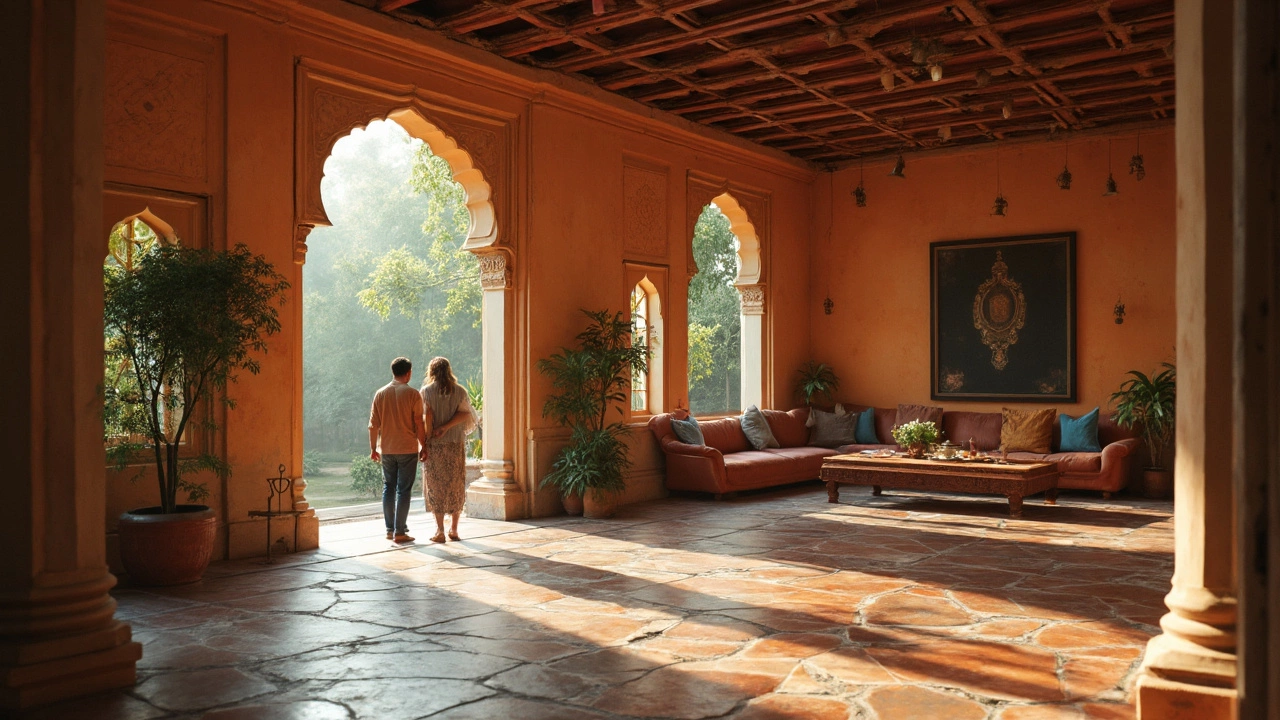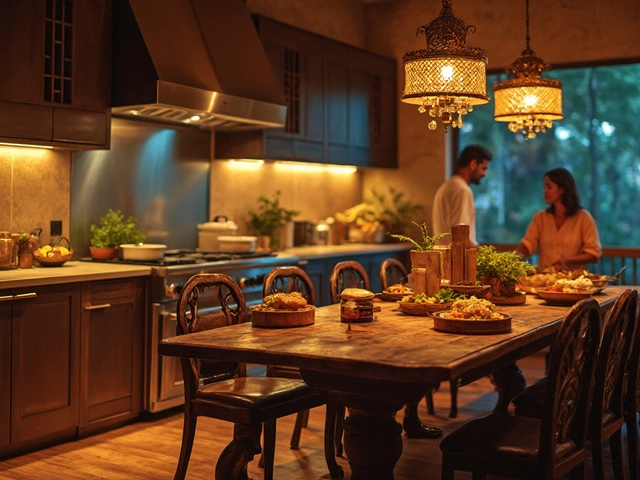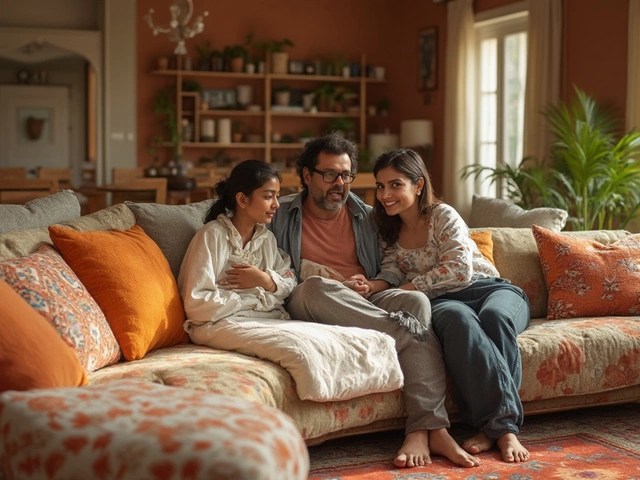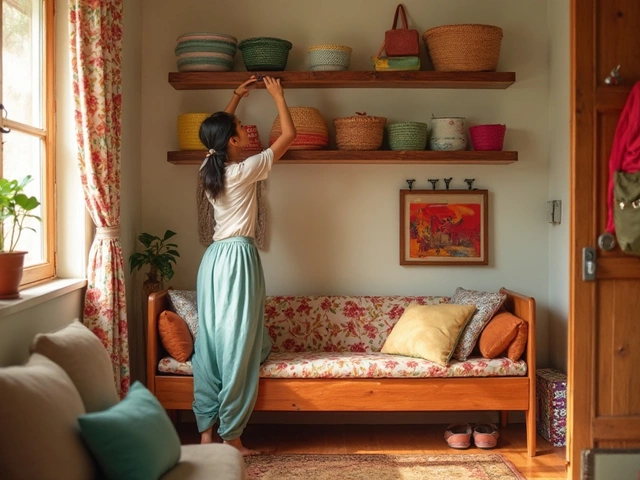If your home has floors that creak louder than your morning alarm, welcome to the club. Old houses come packed with personality—but also bring wonky subfloors, dips, and surprises that make picking new flooring a real puzzle. What looks good for a new-build might just highlight every flaw in a 1920s bungalow or a Victorian cottage.
So, what actually performs? You can’t just grab any trendy floor off the shelf. Before you get lost in a sea of samples, it's smart to look at what holds up in old homes and what flops fast.
Curious if you can save your original floors? Maybe you’re itching for something new but want it to look like it’s always been there. Maybe there are uneven spots or moisture issues, and you’re worried about wasting cash on the wrong product. Let’s sort out what works, what doesn’t, and the little things that can make a big difference when tackling floors in an older place.
- Old House Floors: What Makes Them Tricky?
- Should You Stick With the Originals?
- When Hardwood is Still King
- Modern Solutions That Blend In
- Floors to Avoid in Older Homes
- Smart Tips for a Stress-Free Upgrade
Old House Floors: What Makes Them Tricky?
Whoever said "just put down new planks" probably never dealt with a truly old house. These places come with stories, and almost every story leaves a mark—quirky construction, shifting over the years, or repairs done with whatever was handy at the time. The result? Floors that don’t quite line up, squeaks in odd spots, and a mix of materials hiding under carpet or paint.
Here’s what makes finding the best flooring for an old house a pain—and what you’ll want to watch out for:
- Uneven surfaces: In old homes, subfloors can dip, slope, or wave by as much as an inch from one side of the room to the other. It’s nearly impossible to get a perfectly flat surface without major construction.
- Moisture issues: Leaky basements, old crawlspaces, and not-so-airtight foundations mean higher humidity and dampness under and around floors. If you pick the wrong type of floor, you could end up with buckling or mold.
- Original materials: Many old houses have solid wood floors, sometimes with layers of linoleum, glue, or ancient tile on top. Ripping up what’s there is a gamble—you might find something beautiful, or a patched-up mess.
- Noisy boards: Squeaks and creaks are almost a feature in these homes. They can come from old wood shrinking over decades, loose nails, or subfloor gaps.
- Odd room sizes: Hallways or rooms in older homes rarely match modern dimensions, meaning you have to cut boards or tiles in weird ways to get them to fit.
Take a look at some of the most common challenges and how often folks run into them in houses built before 1950:
| Issue | Reported in Pre-1950 Homes |
|---|---|
| Unlevel Subfloors | 70% |
| Moisture Problem | 55% |
| Multiple Flooring Layers | 48% |
| Noisy/Squeaky Boards | 78% |
Getting the best flooring for an old house isn’t just a style call—it’s about working with what you’ve got and making smart fixes that last. Before you buy anything, know exactly what’s underfoot and what kind of hurdles you’re going to face.
Should You Stick With the Originals?
Here’s the real deal: original floors in old houses are usually hardwood or pine planks, and they’ve survived for decades—sometimes over a century. If you’re lucky enough to have these, that’s already a huge score. Genuine hardwood rarely gets installed in brand-new builds these days because the raw material costs are just too high. People pay a premium for that well-worn, real wood vibe.
But keeping original best flooring isn’t just about looks. Older wood floors were milled wider and thicker than most modern boards, which means they can often handle several rounds of sanding and refinishing over the years. Engineered and newer hardwoods usually can’t. In a lot of cases, a pro refinisher can sand out decades of wear, pet scratches, and even some water stains, bringing back the original shine.
That said, there are a few things to check before you decide to restore:
- Condition: Are the boards rotten, split, or full of gaps? A little character is fine—big holes or soft spots mean more expensive repairs.
- Hidden issues: Sometimes older homes have layers of linoleum, carpet, or even asbestos tiles on top of the wood. You’ll need to carefully remove these and check for glue residue or damage.
- Noise: Old floors creak—that won’t ever go away entirely. If you hate the sound, it might bug you even after refinishing.
If your floors are pretty solid, sticking with the originals almost always keeps more value in the home than adding flooring options that look new but aren’t truly period-correct. Plus, you avoid landfill waste.
Curious what you might pay for restoring instead of replacing? Here’s a quick cost comparison:
| Flooring Project | Estimated Cost (per sq ft) |
|---|---|
| Refinish original hardwood | $4 - $7 |
| Install new hardwood | $9 - $15 |
| Install luxury vinyl plank | $3 - $7 |
Notice that refinishing costs less than half of new hardwood in most cases. And that’s if your floors even need the full sand-down—sometimes a buff and a coat of polyurethane is enough for a quick refresh.
To sum it up—if your original floors are salvageable, they’re almost always worth keeping. You’ll keep the soul of the house and usually save money, too.
When Hardwood is Still King
You might wonder why hardwood keeps getting recommended for an old house. Here’s the simple truth: it’s durable, repairable, and it just looks right, especially if your home was built before the 1950s. Those thick planks, solid wood grains, and colors that age with the house—that character is tough to copy. Hardwood isn’t just about looks, either. It can usually be sanded and refinished multiple times, so even if your dog tears it up or you spill one too many glasses of red wine, you’ve got plenty of chances to fix it.
But not all hardwood is created equal. You’ll see old-growth oak, heart pine, or maple in classic houses. These woods are harder to scratch than modern softer woods. If you’re lucky enough to have original hardwoods hiding under carpet or vinyl, consider bringing them back to life instead of replacing them. You’ll keep that authentic vibe and probably save money compared to full replacement.
Have to lay new hardwood? Here’s what to think about:
- Match the width: Old floors often use wider planks than what’s standard now. Go wider if you can—narrow strips can look out of place.
- Go solid, not engineered—at least on wood floors above ground level. Solid hardwood handles refinishing better than engineered wood.
- Mind the finish: Matte or satin looks less modern and less fake than high-gloss. Avoid anything that says “no maintenance” on the label—those finishes can look plastic.
- Color matters: Stained floors that look almost black or gray are trendy now, but classic medium to rich browns blend in better with older trim and details.
Most people don’t realize solid hardwood’s lifespan can blow past 100 years. There’s a reason heart pine floors from the 1800s still look great today after refinishing. Check out what’s typical for common woods:
| Species | Average Lifespan After Refinish | Historic Use |
|---|---|---|
| Oak | 80-120 years | 1920s-1950s homes |
| Heart Pine | 100+ years | 1800s mills, farmhouses |
| Maple | 70-100 years | Victorian, Craftsman |
One last tip: Watch out for major moisture problems or obvious sagging. Fix those first—no floor stays strong if the base is wobbly or damp. Done right, solid hardwood really is the kind of flooring that not only honors your old house but actually makes it worth more.

Modern Solutions That Blend In
Old house purists love original wood, but sometimes you're dealing with patched-up planks or old floors that just won't take another sanding. That’s where modern flooring options step in. The trick is making sure new materials don’t scream 'cheap upgrade' and ruin that vintage vibe.
Engineered hardwood is probably the smartest move if you want the look of best flooring but need durability. This stuff uses a thin slice of real wood glued to a stable base, so it won’t gap or buckle as easily when your house does its seasonal shifting. Plus, engineered planks come in finishes that match oak, maple, or chestnut—no one has to know they're not 100% original.
Luxury vinyl plank (LVP) is another lifesaver. It's waterproof, scrapes less, and installs right over uneven floors. Some newer LVP even copies grain patterns, edge details, and color changes you’d find on actual old floors. It's also easy to replace just one plank if you mess it up, which beats trying to match a century-old board. A recent survey by the National Association of Realtors showed LVP use in renovations jumped over 20% since 2021 because it’s both tough and realistic.
If you’ve got a weird-shaped hallway or rooms that go off at funny angles, look at flexible sheet vinyl. It hugs bumps and dips, costs way less, and can get you through a tough patch while you save for a bigger fix. Tile also works in kitchens and baths, but skip the shiny porcelain—they stick out like a sore thumb. Try matte-finish or patterned tiles that suit the age of your house.
Here’s a quick look at how the top modern choices stack up for old house floors:
| Material | Waterproof | Handles Uneven Floors | Historic Look |
|---|---|---|---|
| Engineered Hardwood | No | Somewhat | Yes |
| Luxury Vinyl Plank | Yes | Yes | Good (if you pick right) |
| Sheet Vinyl | Yes | Yes | Fair |
| Tile (Matte/Patterned) | Yes | No | Yes (with right patterns) |
Don't forget the small things. Wide-plank options and subtle color variations help new floors look less out of place. Skip high gloss finishes—they just make the floor look obviously new. And if you’re really after the best flooring for an old house, bring along some photos when you shop, so you can match things up with your home's style right on the spot.
Floors to Avoid in Older Homes
Not all flooring plays nice with drafty walls, uneven joists, or years of settling. Slapping the wrong stuff down can mean squeaks, gaps, or even warping after your first winter. Here’s where folks run into real trouble.
- Laminates: Cheap laminate floors might sound good on price, but old houses usually mean unleveled subfloors. Laminates hate moisture and hate being flexed, so they’ll often buckle or separate at the joints within a year—sometimes sooner if your radiators or pipes ever leak.
- Standard Vinyl Sheet: While newer luxury vinyl planks can handle bumps, basic sheet vinyl shows every dip and wave. If your floor flexes, the glue may fail and corners peel up. It can also look a bit out-of-place if your home has lots of original trim or detailing.
- Ceramic Tile (without serious prep): Tile’s durability is great, but standard old house floors often flex and shift. Unless you want cracks running through your grout in no time, tile is risky unless the floor is rock solid—and most aren’t unless you reinforce them.
- Wall-to-Wall Carpet: In theory, carpet can hide uneven floors, but it also traps moisture. In old homes with less-than-perfect insulation, that can mean musty smells and even mold. Plus, it hides beautiful old hardwood you might want to bring back.
- Solid Cork: Cork works if you have flat, dry floors. But with drafty, shifting boards, it curls and swells under humidity swings. Maintenance is a headache, especially with kids, pets, or moisture leaks.
Here’s a quick look at how these troublemakers stack up in problem areas:
| Floor Type | Handles Moisture? | Deals with Unevenness? | Stays Quiet? |
|---|---|---|---|
| Laminates | No | No | No |
| Vinyl Sheet | Kind of | No | Yes |
| Ceramic Tile | Yes | No (needs flat base) | Yes |
| Wall-to-Wall Carpet | No | Yes | Yes |
| Solid Cork | No | No | Yes |
Plenty of homeowners have learned the hard way that some modern materials just don’t mix with classic foundations. When choosing the best flooring for an old house, avoid these options unless you’re okay with extra repairs or a look that just feels off.
Smart Tips for a Stress-Free Upgrade
Redoing floors in an old house is way less stressful if you know the right moves. First, always check the subfloor. Old homes often hide uneven boards, squeaks, or even random dips. If you find soft spots, fix them before putting down any new best flooring or you’ll be hearing those squeaks for years. A level subfloor is the foundation for any solid upgrade.
Love the idea of keeping your home’s story intact? Consider refinishing what’s already there—think sanding down original hardwood or cleaning up vintage tiles. Not only is this greener, but it often costs way less than ripping everything out. According to the National Association of Home Builders, refinishing basic hardwood costs about $3 to $8 per square foot, much cheaper than new installs most of the time.
Don’t skip underlayment. Older floors need a moisture barrier or sound buffer way more than new builds do. Even engineered planks and certain vinyls benefit from the extra layer, especially over wonky floors. It saves headaches if your ground floor sometimes feels damp or you’re dealing with a chilly crawl space.
Here’s a quick checklist to keep things painless:
- Measure rooms twice. Weird walls or angles are standard in old homes. A little patience here saves a lot of wasted material.
- If you go with flooring options like engineered wood, get ones rated for "floating installation"—they’re forgiving if your surface isn’t perfect.
- Test small samples at home. Sunlight and shadow play tricks on old paint and trim. Sometimes a color that looked perfect at the store reads totally different once installed.
- Budget at least 10% extra material for mistakes or awkward cuts, especially if you have odd room shapes or need to match up with old thresholds.
- Check for lead paint or asbestos in old glue or floor tiles if your house was built before 1980. Hire pros if you find it—removal is not a DIY job.
Decent pros matter. If you’re not up for doing the work, find installers who know their stuff with old house quirks. Ask about their experience with older homes and get references. They’ll spot issues faster and won’t freak out when a floorboard croaks mid-job.
| Floor Type | Cost per Square Foot |
|---|---|
| Engineered Hardwood | $7–$14 |
| Luxury Vinyl Plank | $3–$7 |
| Tile | $8–$17 |
| Refinishing Original Hardwood | $3–$8 |
Finally, don’t rush. The best flooring choices in old houses take a little more planning, but you’ll dodge expensive regrets if you do the prep right. Little things, like a good underlayment or a sharp installer, can save you cash and sanity down the line.





